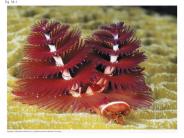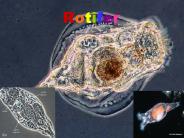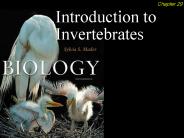Rotifers PowerPoint PPT Presentations
All Time
Recommended
Rotifers Rotifera Unknown relationship to other phyla Pseudocoelomate Protonephridia Ciliated lobes whirl water into mouth Parthenogenesis Smallest multicellular ...
| PowerPoint PPT presentation | free to view
Flatworms, Roundworms, and Rotifers Rupp Bio II Honors Chapter 36
| PowerPoint PPT presentation | free to view
'Toes' with pedal glands for adhesion. Corona - cilia ring. ... Size aids in diffusion of gas and nutrients. Protonephridia with flame bulbs. ...
| PowerPoint PPT presentation | free to view
CLOACA. 1. CHAMBER WHICH COLLECTS UNDIGESTED MATERIAL ... CLOACA EMPTIES OUT THROUGH AN ANUS - CEPHALIZATION. 1. PAIR OF CEREBRAL GANGLIA ...
| PowerPoint PPT presentation | free to view
... (and some cats Pinworm Elephantiasis Heartworm Disease Phylum Rotifera Called rotifers Free living and transparent and in fresh water Can survive ...
| PowerPoint PPT presentation | free to download
DNA Barcoding the Right Way: A Theory-based Method for Species Detection and Identification Bill Birky Department of Ecology and Evolutionary Biology The University ...
| PowerPoint PPT presentation | free to download
S. Dooms1, K. R. Dierckens , A. Abatzopoulos , A. Triantaphyllidis , ... Fish and Crustacean culture depend on the production of rotifers ...
| PowerPoint PPT presentation | free to view
Composition and dynamic of Rotifera fauna from eastern littoral zone of Lake ... The saprobic index of this part of the Lake was between 1.5 and 2 that ...
| PowerPoint PPT presentation | free to view
Copepod predation on rotifers affects the dynamics and structure of zooplankton communities ... Lovenula alluaudi (calanoid copepod) as adult females and males ...
| PowerPoint PPT presentation | free to view
Institue of Freschwater Ecology and Inland Fischeries Berlin. Presentation ... predatory impact on large cilates in natural ciliate communitys than B. rubens. ...
| PowerPoint PPT presentation | free to view
Some organisms - body cavity - not completely lined by mesoderm. Pseudocoelomates include rotifers (phylum Rotifera), roundworms (phylum Nematoda).
| PowerPoint PPT presentation | free to download
Phylum Rotifera Rotifers have a ciliated crown, the corona, that is characteristic of the phylum. Phylum Rotifera Rotifers come in a wide range of colors and shapes.
| PowerPoint PPT presentation | free to view
KINGDOM ANIMALIA General Characteristics of Animals KINGDOM ANIMALIA: 10 PHYLA Porifera Cnidaria Rotifera Platyhelminthes Nematoda Annelida Mollusca Arthropoda ...
| PowerPoint PPT presentation | free to view
Aquatic Biology. Rotifers. Brachionus havanensis ... Monostyla qradridentata. Polyarthra major. Trichocera longiseta. Lecana luna. Kellicottia longispina ...
| PowerPoint PPT presentation | free to view
... microscopic Wheel animals Bilateral symmetry Well developed organ systems Rotifers Phylum Rotifera Proboscis Worms Phylum Rhynchocoela Flatworms ...
| PowerPoint PPT presentation | free to view
... (4,500 species) Ectoprocts A brachiopod Brachiopoda (335 species) Rotifera (1,800 species) A rotifer (LM) A ctenophore, or comb jelly Ctenophora ...
| PowerPoint PPT presentation | free to download
Chapter 34 Section 2 Phylum Nematoda & Rotifera Phylum Nematoda Roundworms (pseudocoelomates) Bilaterally symmetrical 1mm-120mm (4 feet) Digestive tract with two ...
| PowerPoint PPT presentation | free to view
Rotifer Phylum Rotifera From the Latin Rota a wheel and Ferre to bear or carry Rotifera is divided into two classes, the Digononta and the Monogononta The members of ...
| PowerPoint PPT presentation | free to download
Ch 11 Pseudocoelomates soo-doe-see-low-mates Acrobeles complexus Pseudocoelomates 9 phyla: Rotifera- do not molt (Lophotrochozoan) Acanthocephala Nematoda molt ...
| PowerPoint PPT presentation | free to download
Feed on algae, bacteria, protozoans, rotifers, and other microorganisms. They are granulated in appearance PROTOZOA: Amebas Amebas body: ...
| PowerPoint PPT presentation | free to download
Divergent gene copies in the asexual class Bdelloidea (Rotifera) separated before the bdelloid radiation or within bdelloid families. Mark Welch DB, Cummings MP, ...
| PowerPoint PPT presentation | free to download
Enrichment of rotifers Essential fatty acids eicosapentaenoic acid ... (ARA 20:4n-6) Proteins and essential amino ... Top & S.S. Live food aquaculture ...
| PowerPoint PPT presentation | free to download
Head is bluntly arrow shaped. Auricles function as sense organs. Two light-sensitive eye spots ... Filarial Worm. Rotifers. Rotifers (phylum Rotifera) ...
| PowerPoint PPT presentation | free to download
Only 3% of the world's water is fresh, and 99% of this is either frozen in ... Zooplankton components are protozoans, rotifers and crustaceans. Biological Structure ...
| PowerPoint PPT presentation | free to view
Background and inspiration for current research - Rapid Prey Evolution in an ... Predator-prey microcosm with rotifers, Brachionus calyciflorus, cultured ...
| PowerPoint PPT presentation | free to download
Nematodes, shrimps, bdelloid rotifers, degenerate medusae (Economos, 1979) ... Horse, Sheep, Guinea pig (Economos, 1979; 1980) ...
| PowerPoint PPT presentation | free to download
Parasites of nearly all animals and plants. Facts, cont. ... Feed on rotifers, tardigrades, annelids, other nematodes ... Tube-within-a-tube digestive system ...
| PowerPoint PPT presentation | free to view
... by environmental conditions (in aphids, rotifers, and some crustaceans) ... Daphnia, a freshwater crustacean, will change to asexual reproduction relative ...
| PowerPoint PPT presentation | free to view
Department of Fisheries and Allied Aquacultures. Auburn ... Palmetto bass large zooplankton ( daphnia ) Sunshine bass small zooplankton ( rotifers ) ...
| PowerPoint PPT presentation | free to view
Asexual gene copies differed significantly from sexual gene copies ... Cytogenetic evidence for asexual evolution of bdelloid rotifers. ...
| PowerPoint PPT presentation | free to view
About 2000 species have been described. 9.1 Phylum Rotifera The beating of the cilia in the corona draws in plankton-containing water for food.
| PowerPoint PPT presentation | free to view
Rotifers are one example small, aquatic filter feeders. Males need not apply. ... Hirudinea Leeches. Related to Oligochaetes, they suck blood. Once used ...
| PowerPoint PPT presentation | free to view
WP 1 Mechanisms for establishment of dormant stage ... Subtractive library ?? EST's (P5): ~ 5,000 clones per library (~15,000 ESTs for rotifers) ...
| PowerPoint PPT presentation | free to download
BIO 290 Genomics & Bioinformatics half-unit course taught in the Biology ... members working with zebra-fish, rotifers, archaebacteria, and butterflies ...
| PowerPoint PPT presentation | free to view
1 $100 Which of the following describes flatworms? Platyhelminthes Nematoda Coelom Asexual fission 1 $100 Which of the following describes flatworms?
| PowerPoint PPT presentation | free to download
1 $100 Which of the following describes flatworms? Platyhelminthes Nematoda Coelom Asexual fission 1 $100 Which of the following describes flatworms?
| PowerPoint PPT presentation | free to view
Rotifer culture systems Rotifer Batch Culture Low density in large tanks 3 to 10 m3 inoculate at 50/ml increasing to 250/ml Medium density in tanks 2 to 5 m3 ...
| PowerPoint PPT presentation | free to download
... (Dracunculus medinensis): transmitted by infected copepods in drinking water larvae move into the body cavity female adult migrates to the subcutaneous ...
| PowerPoint PPT presentation | free to download
Reproductive system is not well understood: Only female reproductive organs have been identified. ... Pigs become infected by eating grubs.
| PowerPoint PPT presentation | free to download
Algae its role, species and production requirements Role of algae in aquaculture First link in the chain of live food manufacture and nutrition.
| PowerPoint PPT presentation | free to download
Chapter 33 Invertebrates Invertebrates Lack a backbone Account for 95% of all known animal species. All but one of the 35 animal phyla. Porifera Sponges are sedentary ...
| PowerPoint PPT presentation | free to download
Are a group composed of several phyla which share similar characters but are ... protonephrida are absent but a tube is present w/midventral pore. for exiting waste. ...
| PowerPoint PPT presentation | free to view
Resists digestion by host (in parasitic nematodes) Phylum Nematoda ... http://www.microscopyu.com/galleries/dxm1200/images/collothecalarge.jpg. rota= wheel ...
| PowerPoint PPT presentation | free to download
chapter 33 invertebrates
| PowerPoint PPT presentation | free to view
Algae and Microinvertebrates
| PowerPoint PPT presentation | free to view
Lophotrochozoa ... These are the Mesozoa, Nemertea and four phyla grouped ... made up of only 20-30 cells arranged in two layers, which are not homologous to ...
| PowerPoint PPT presentation | free to view
Algae Production, Biology and Species Biology Microalgae: microscopic single-celled eukaryotic planktonic algae To be magnified 100 400X in order to recognize ...
| PowerPoint PPT presentation | free to download
in the Great Lakes. Bosmina. Cyclopoid. Copepod. MACROINVERTEBRATES. FISH ... Eutrophication in lakes. Energy Flow. In Ecosystems. Biochemical Oxygen Demand. Dissolved ...
| PowerPoint PPT presentation | free to download
Aquatic, benthic (living at bottom), mostly free-living in fresh water, but some ... Adults are free-living in freshwater. juveniles are parasitic in ...
| PowerPoint PPT presentation | free to download
Animals, Part I Invertebrates Introduction to Animals (Chapter 34) Sponges and Jellyfish (Chapter 35) Simple Worms (Chapter 36) Mollusks and Annelids (Chapter 37)
| PowerPoint PPT presentation | free to view
Animal gametogenesis and embryology (chapters 25, 32, 47) What is an animal? ... nervous and muscle tissues are unique. distinctive stages of development ...
| PowerPoint PPT presentation | free to view
Zooplankton abundance is controlled by interactions between food abundance, fish ... Zooplankton grazing exerts major control on lake metabolism, nutrient cycling ...
| PowerPoint PPT presentation | free to view
Chapter 39. Primitive Invertebrates. Animal Kingdom. SubKingdom-Parazoa: Phylum:Porifera ... Acolomates (no body Cavity) Bilateral Symmetry ...
| PowerPoint PPT presentation | free to view
(Plat = flat) There are three classes: Turbellaria Trematoda Cestoda Characteristics of Flatworms They are acoelomates (they don t have body cavities) ...
| PowerPoint PPT presentation | free to download
Title: INVERTEBRATES Author: SDHC Last modified by: Elizabeth Burton Created Date: 6/18/2004 2:19:09 PM Document presentation format: On-screen Show
| PowerPoint PPT presentation | free to download
Zooplankton 1: protozoans
| PowerPoint PPT presentation | free to view
























































